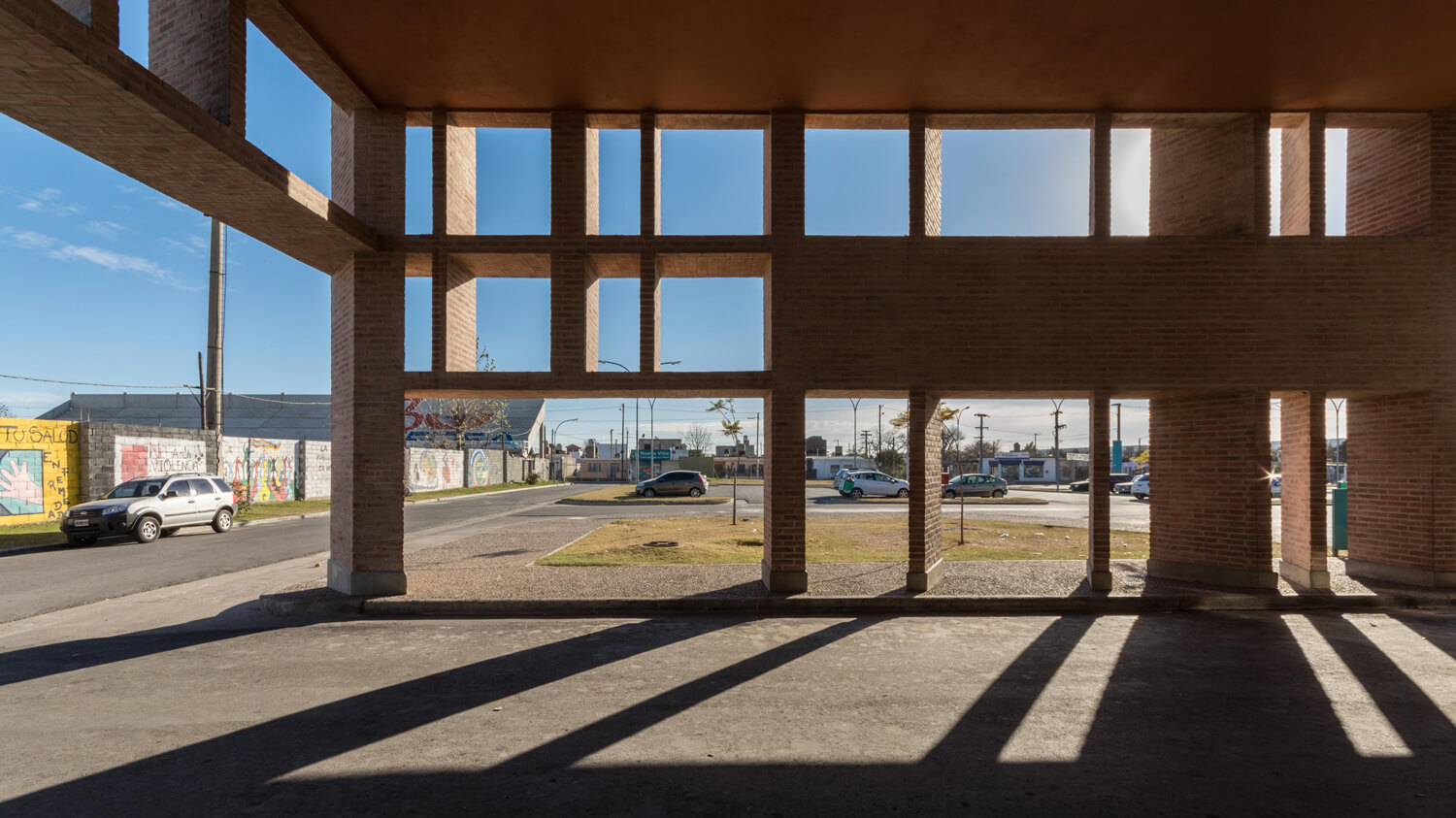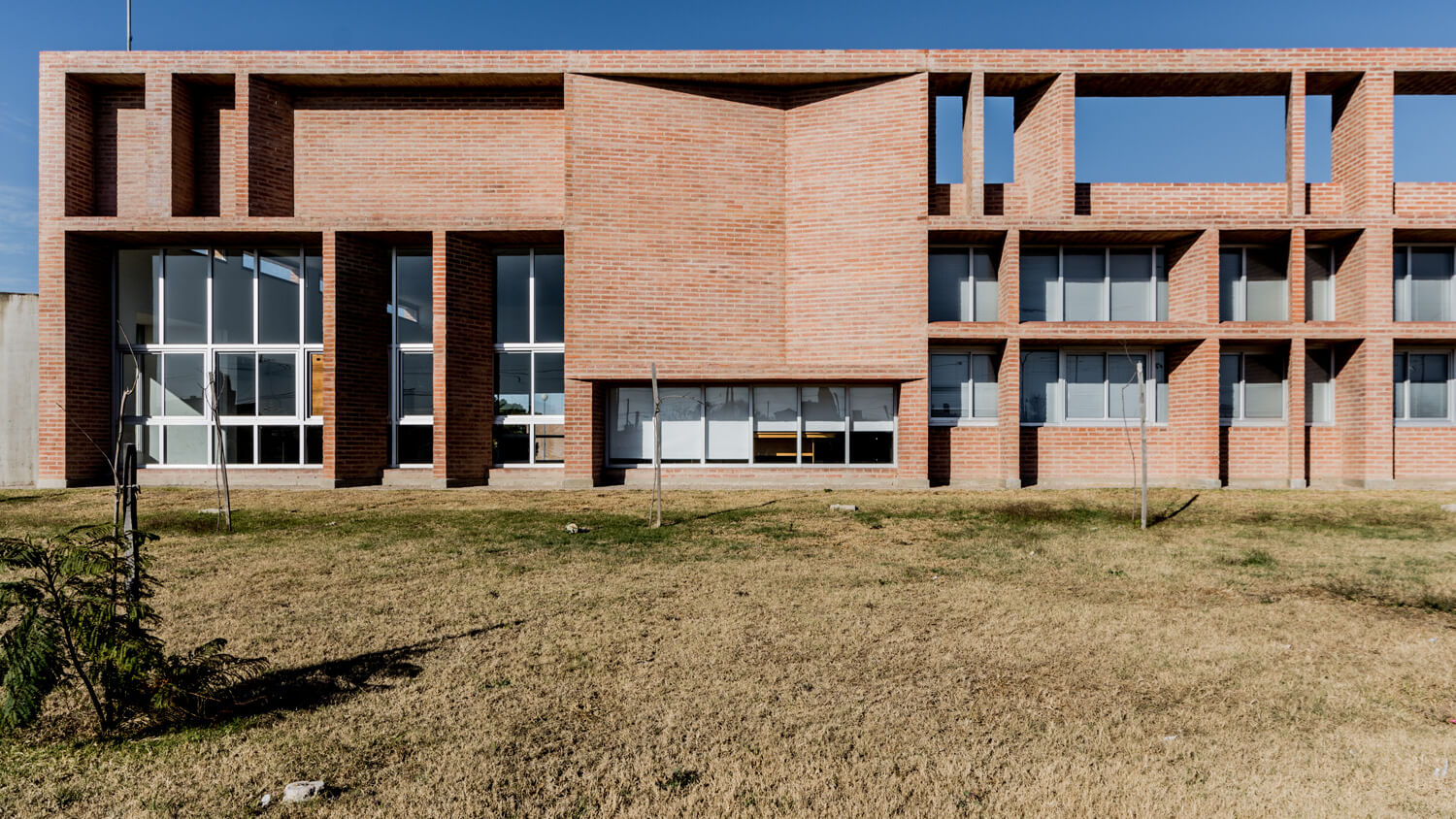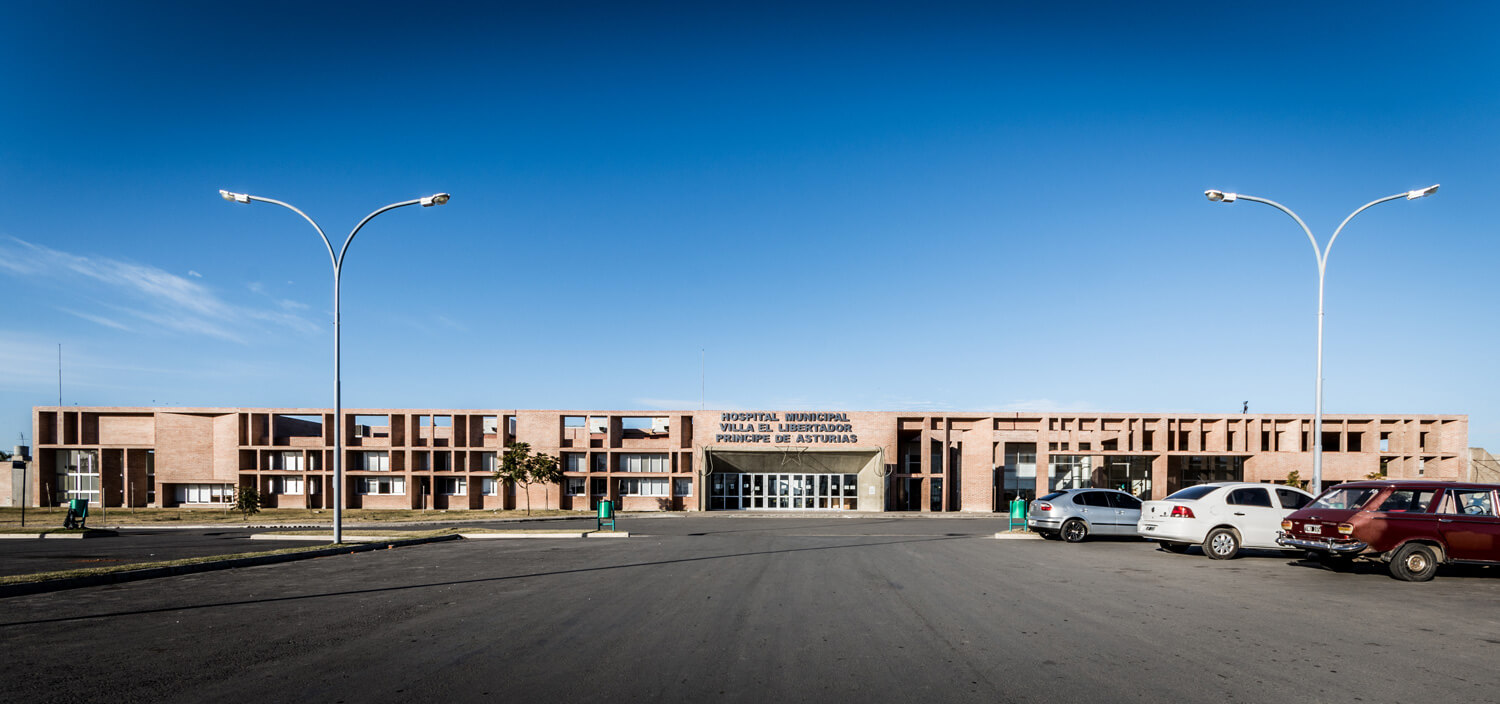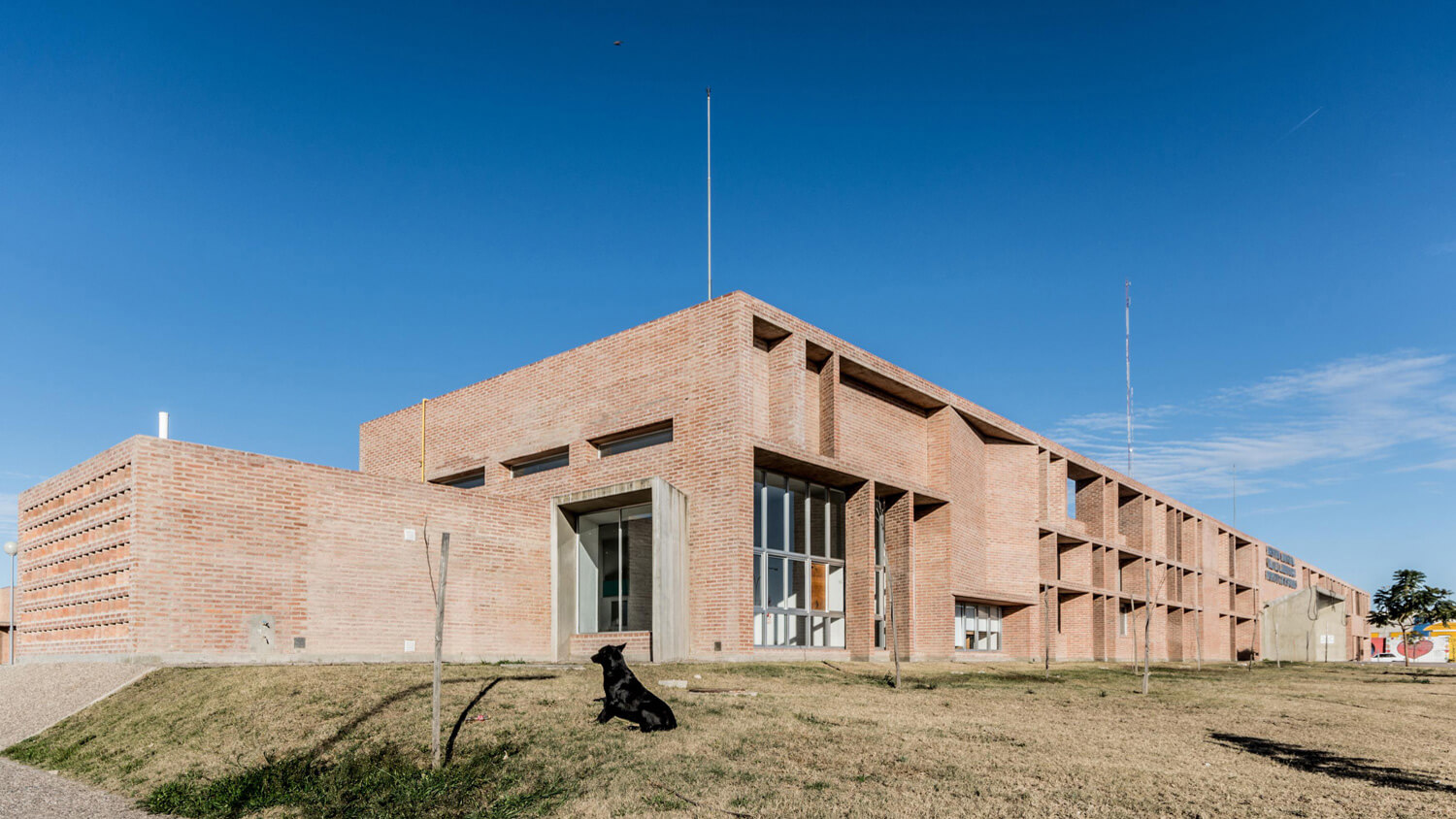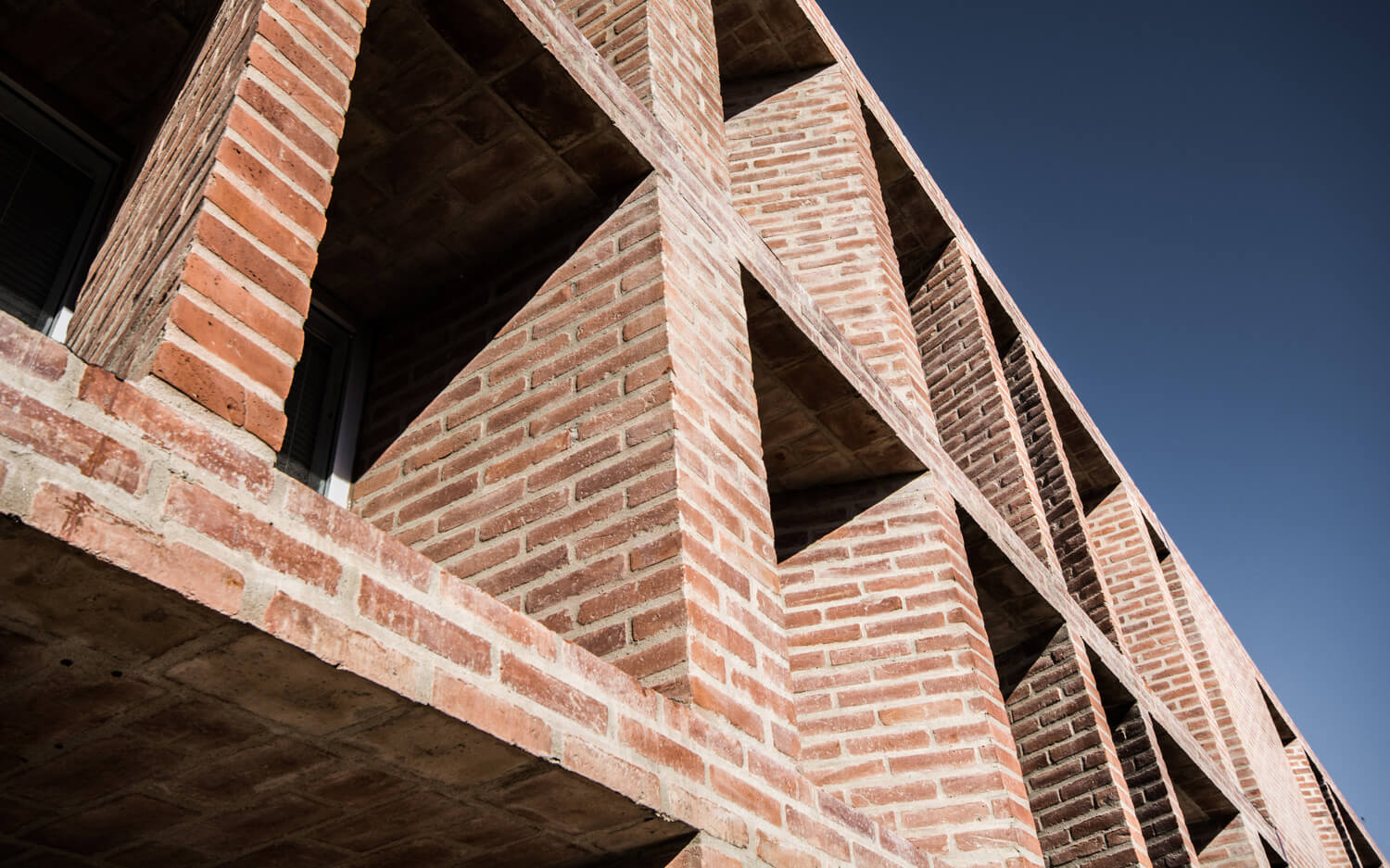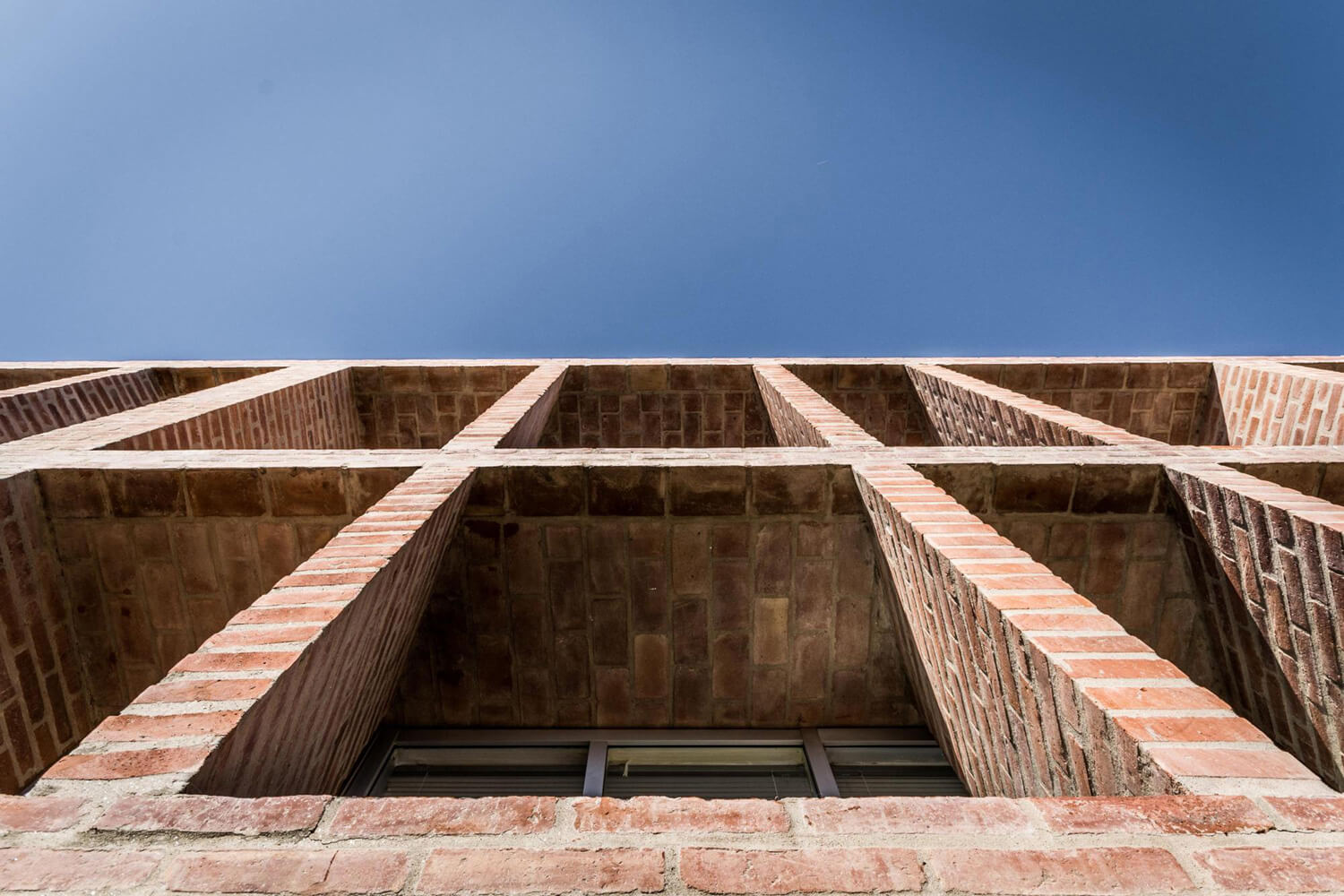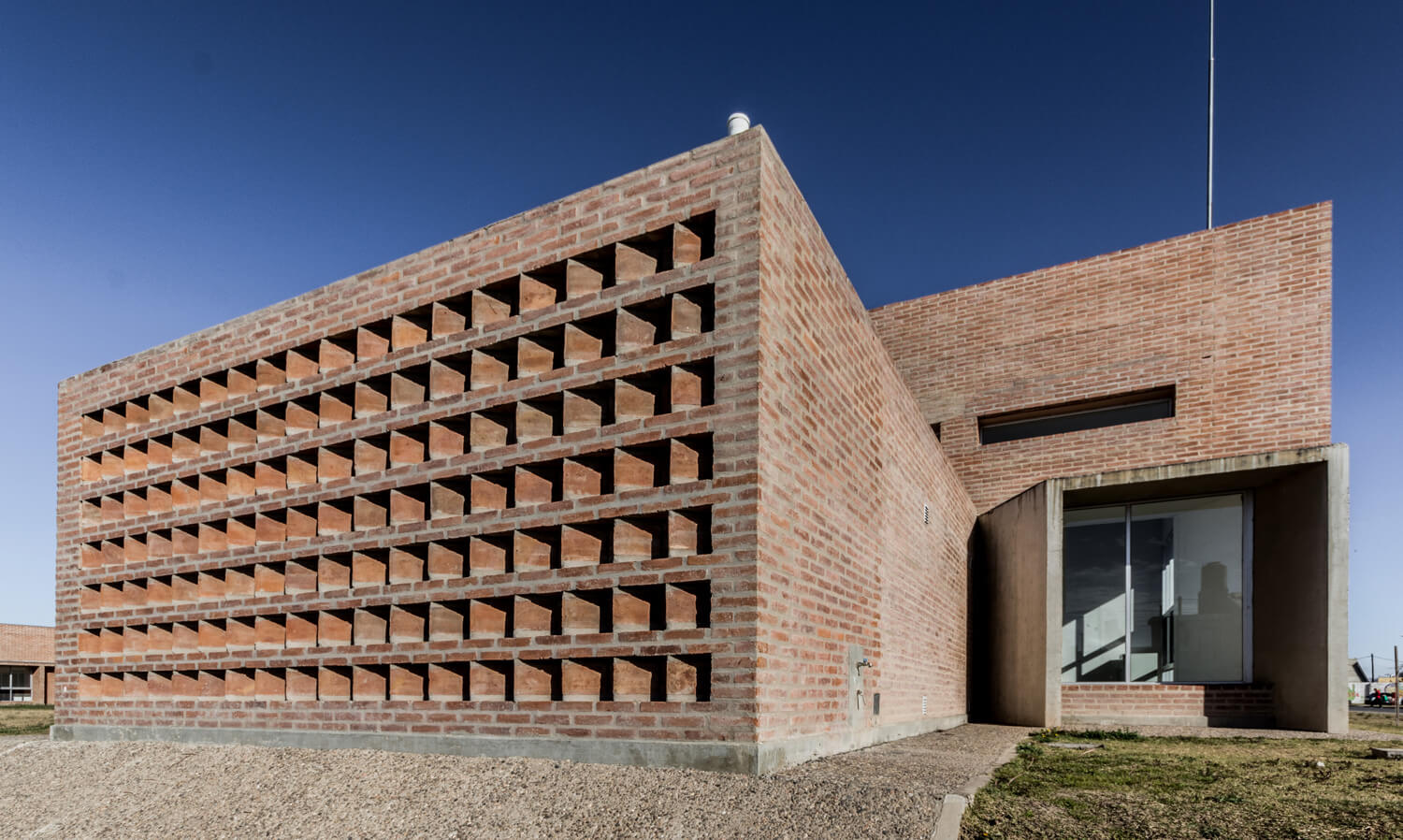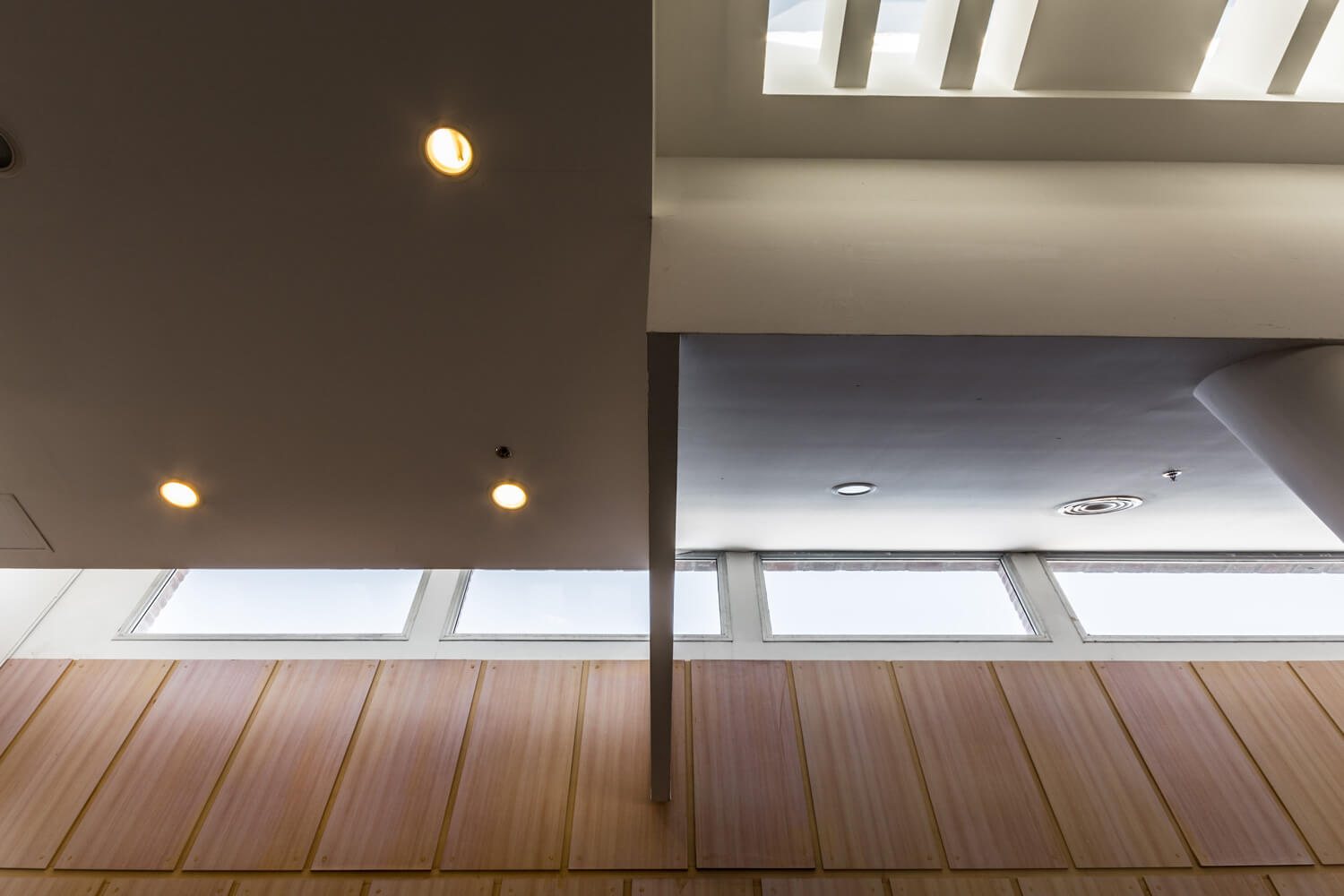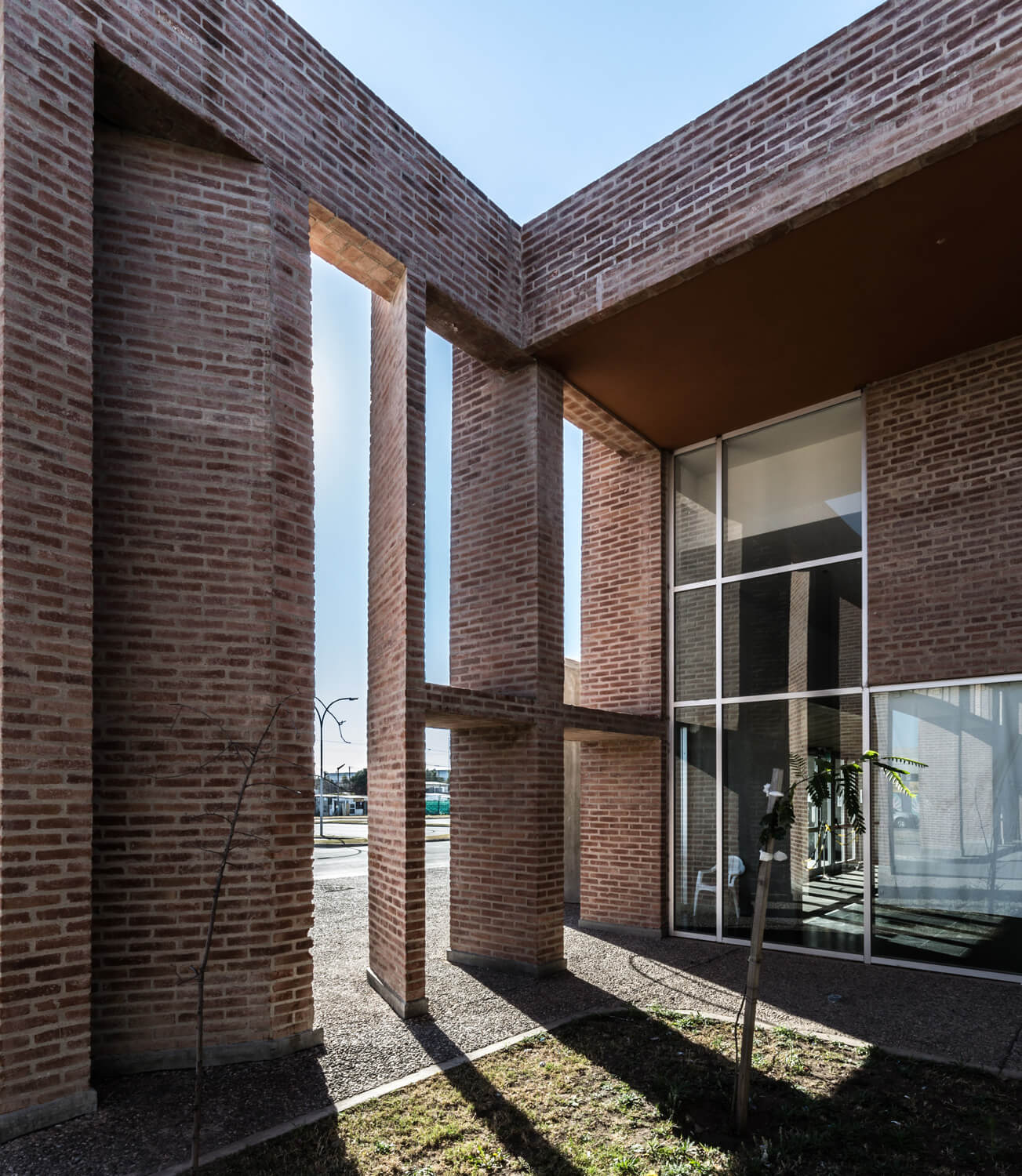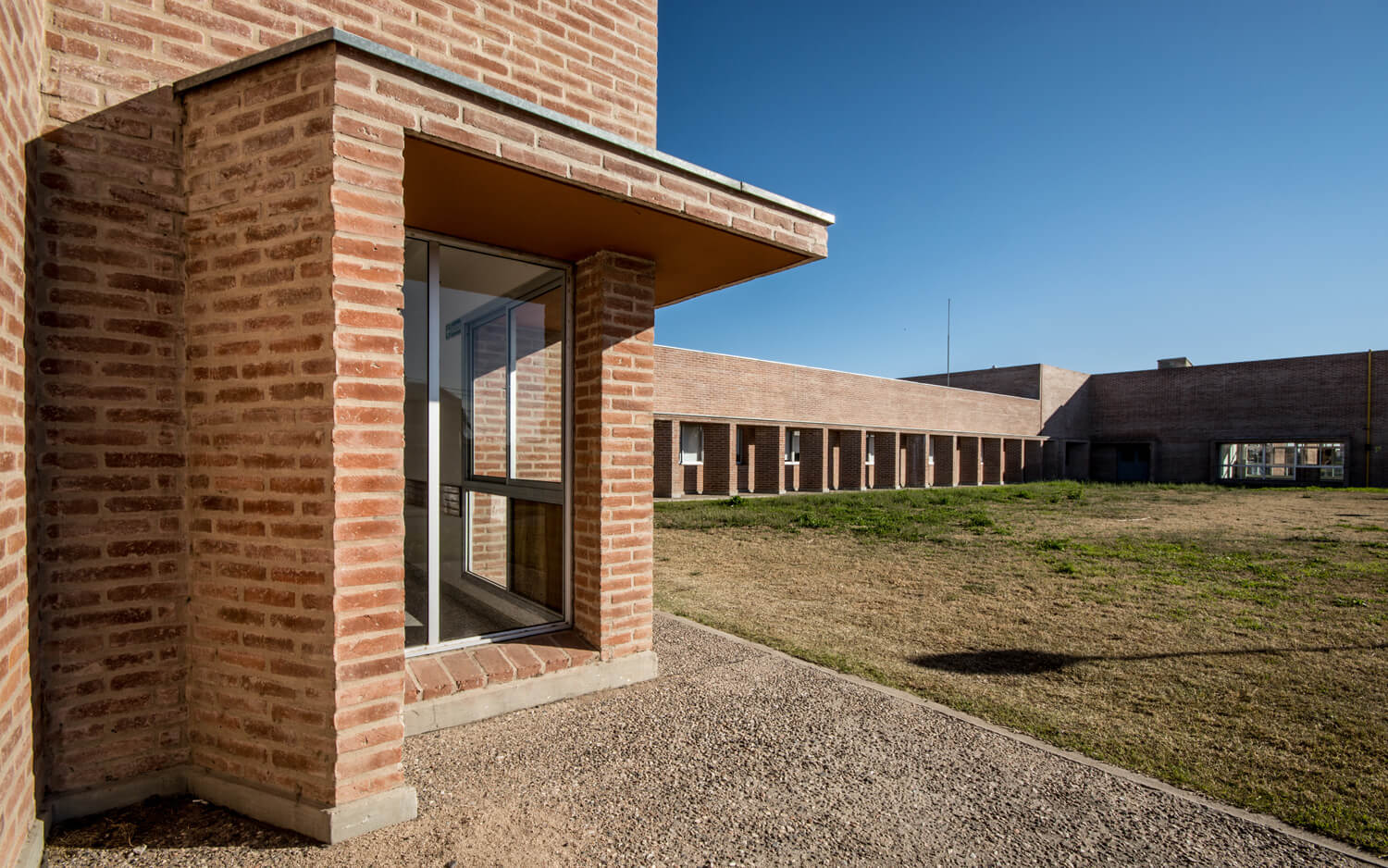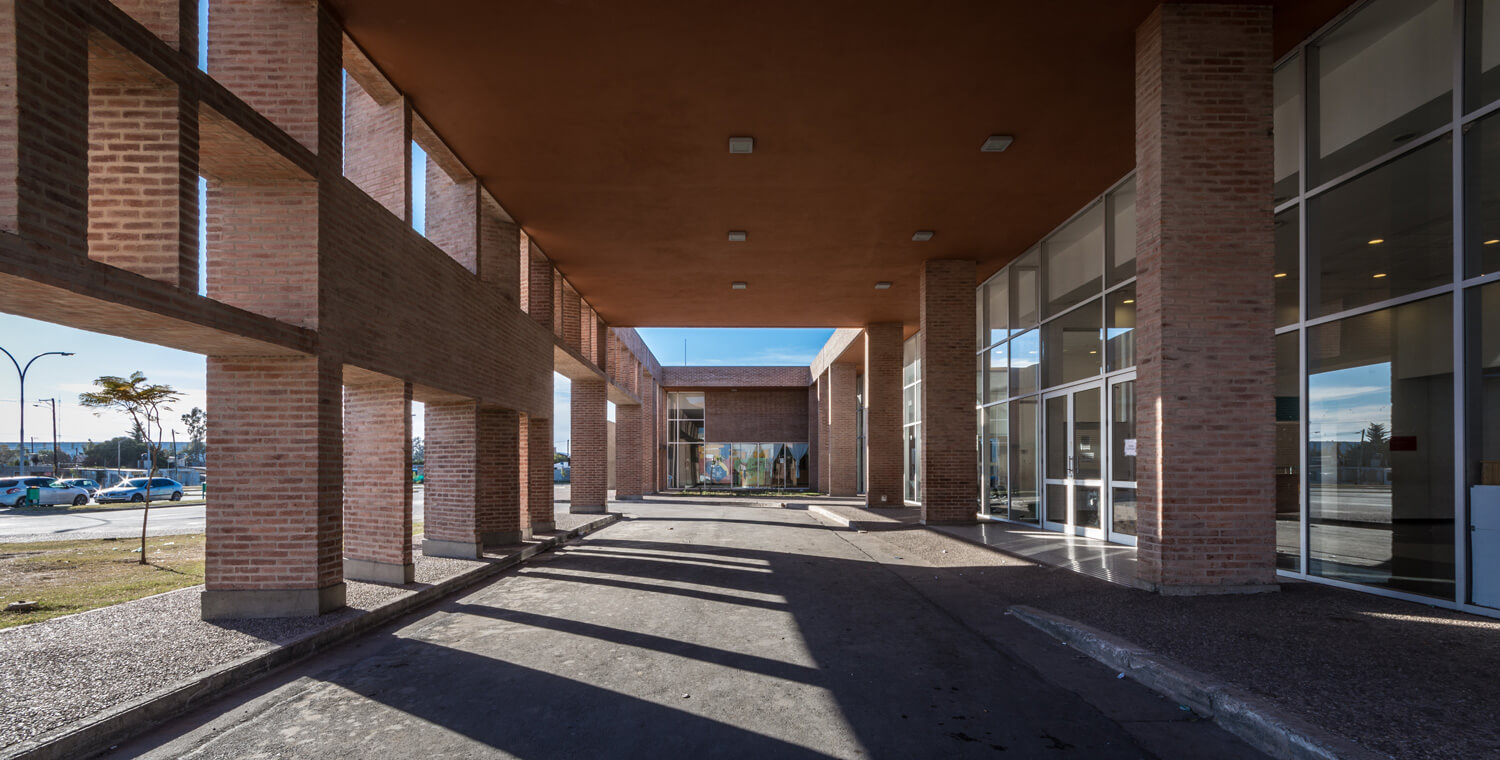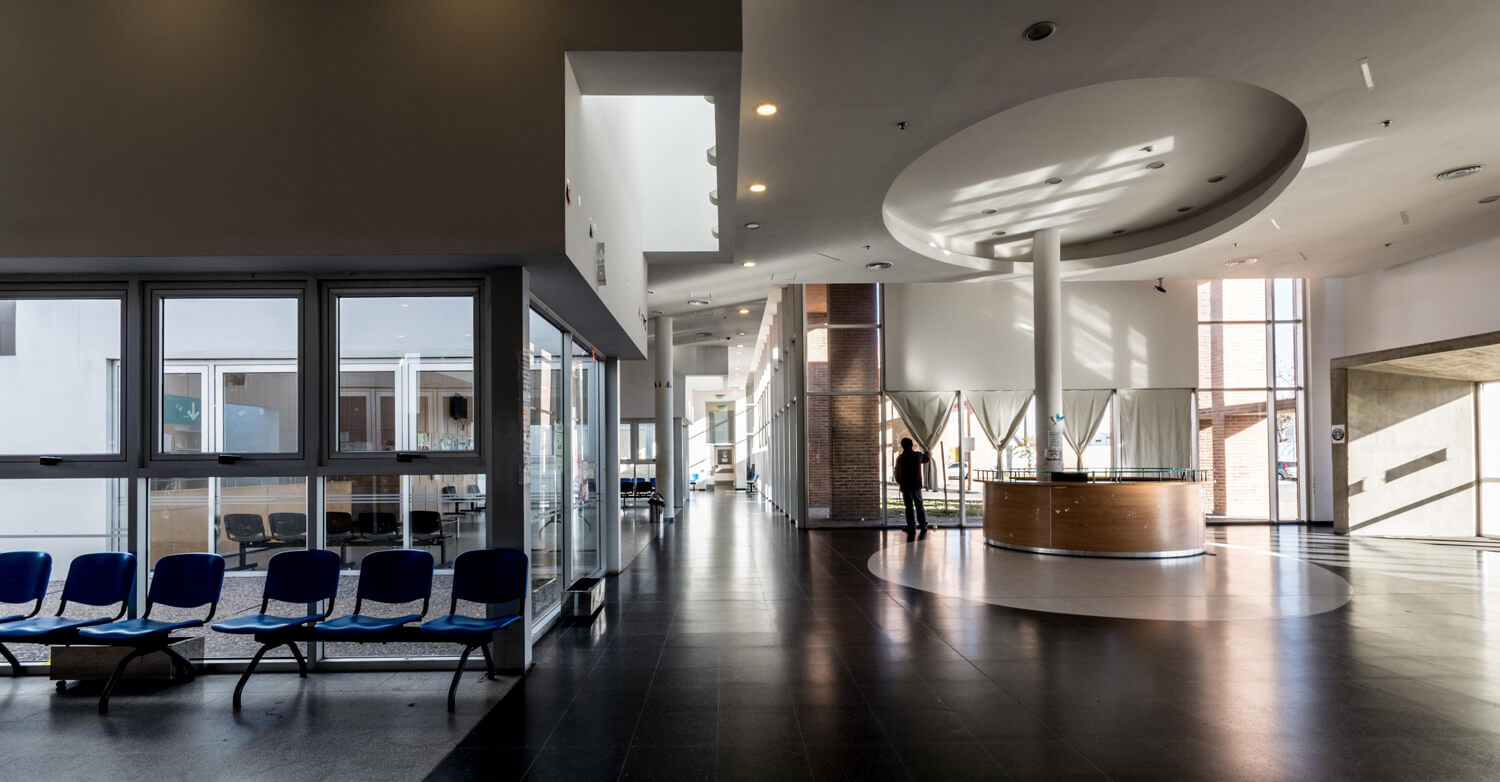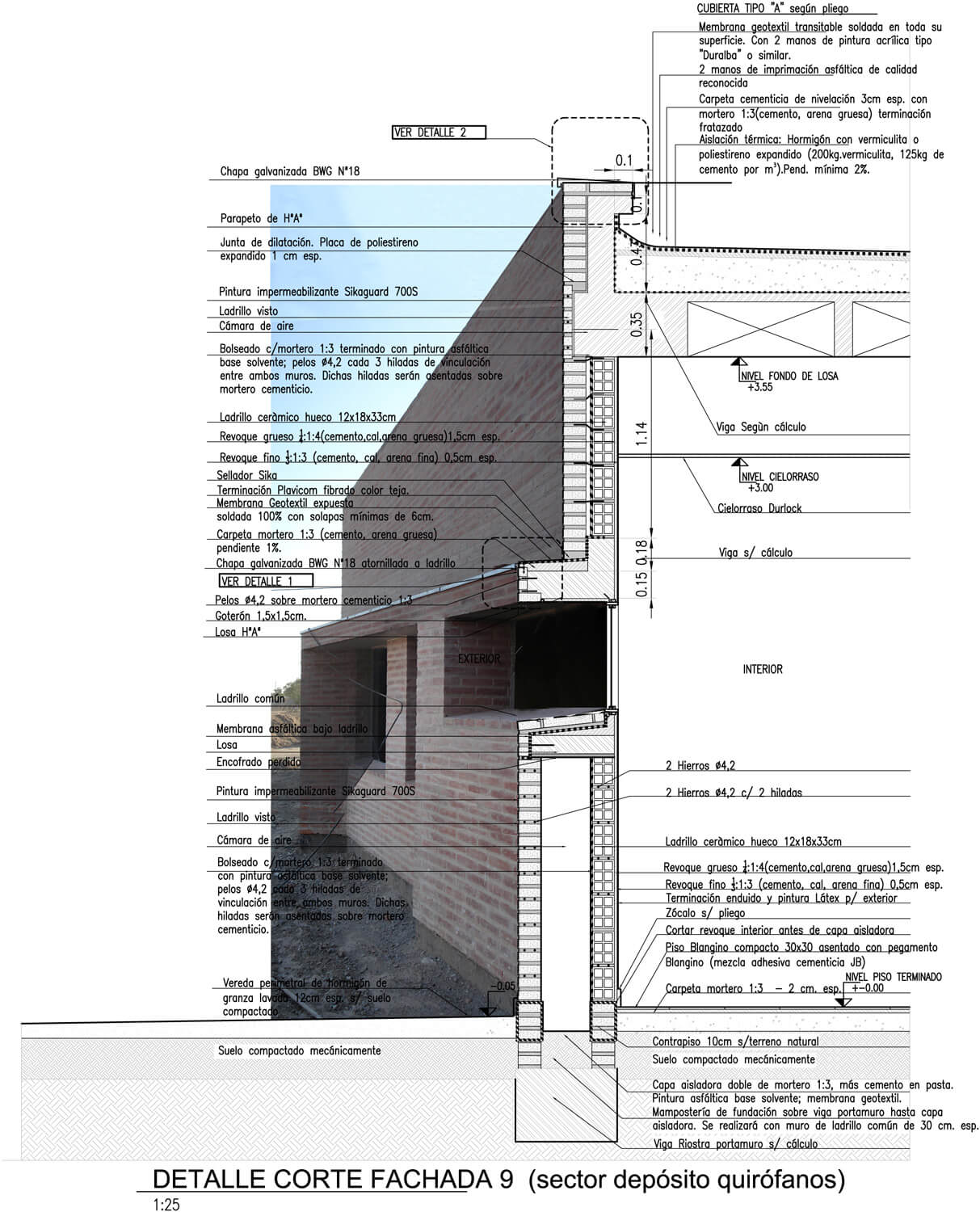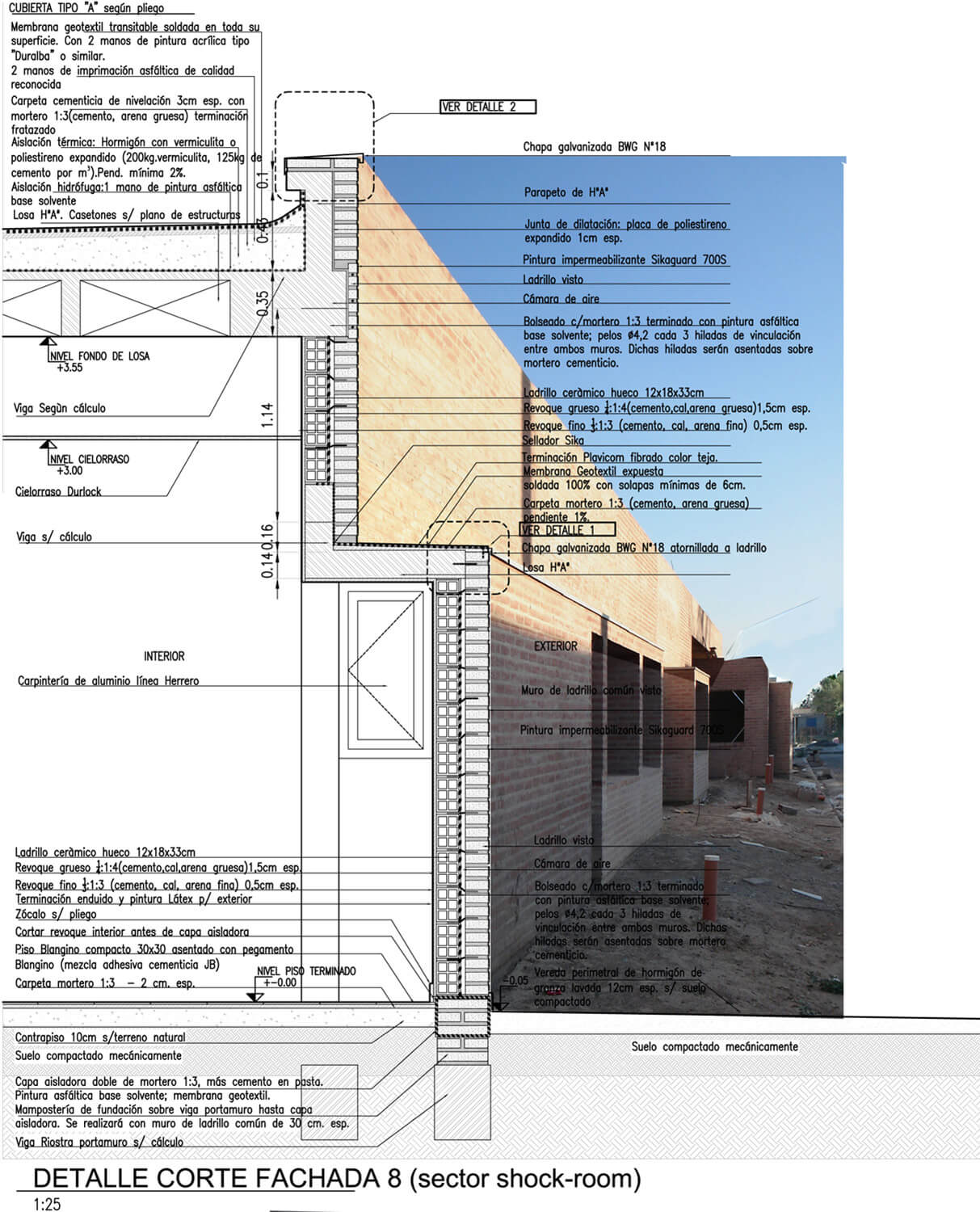Villa el Libertador Municipal Hospital / Santiago Viale + Ian Dutari + Alejandro Paz
Villa el Libertador Municipal Hospital / Santiago Viale + Ian Dutari + Alejandro Paz
Concept
Location
The project is a medium complexity hospital located south of the city of Cordoba, in the populous Villa el Libertador neighborhood. The building responds to a need for health services for a vast section of the lower-middle class population. The project is expressed as a "mono-material box" of exposed brick [a material that is very characteristic of the city, popularized with the projects built by the architect "Togo" Diaz] that envelopes a separate reinforced concrete structure under which are all the activities that meet the requirements of the medical specialties addressed in the program.
Context
The work is located in a residential neighborhood of the city that is characterized by a consolidated urban fabric, with houses one and two floors high, with a regular to precarious level of construction. Responding to the horizontality of the neighborhood fabric, we propose a one-story building with a double height facade in the public sector which gives it hierarchy. It is on a flat site with its main entrance to the north. The lot is large in relation to the proposed program, this allows for a private street surrounding the building that separates it from the neighborhood fabric, highlighting it from the environment. In this sense, to strengthen the institutional character of the building, the project is setback from the facade, generating a large public space at the neighborhood level which in turn gives hierarchy to the main facade and allows a full view of the Hospital.
Research
The use of brick in this project has some simply practical aspects, such as the maintenance of public works, and others that refer to a continuing investigation of the material. Its use is part of an exhaustive search we have been doing in all areas of our professional career, both in university through exercises between students and teachers in which we manipulated, weighed, stuck and interlocked the material, learning its possibilities.
In this project, the facade appears as a large "brick screen at a modified scale" which oriented northward works as a parasol. This is not the result of a random idea but part of our relentless quest to use available resources and take advantage of the structural and expressive qualities of the material, a process that will no doubt continue in another project. We want to reinvent this ancient material which we can access easily, and find answers and possibilities in it for a contemporary architecture. Beyond its usual uses, I believe that this search is not just ours, but of great Latin American architects such as Solano Benitez and Javier Corvalán. It is a contribution and a demystification of the idea that a building of this complexity needs any type of high-tech envelopes, especially in our latitudes where there are excellent craftsmen in this trade.
Using brick as the main material not only connects the complex with the Cordoba architectural tradition, but also improves the thermal conditions inside and minimizes maintenance. The technology allows us to use local labor, which makes the project an employment generator. According to the orientations, we apply parasols of this same material that provide the necessary protection and lighting. This material has a very good behavior for the climate of the city, which has broad temperature changes.
Material and Light
Light has been another issue that has always interested us, making it enter spaces indirectly, creating atmospheres, or directly as "matter" that continually modifies space, or by combining these two resources. In order to approach a humanization of health care, the proposed distribution of spaces allows the vast majority of premises to have natural lighting and ventilation, seeking to provide environmental quality and resource optimization. In the intensive therapy area, the work with natural light is not just an architectural device but has a therapeutic connotation. Therefore we designed three skylights that ensure the perception of the path of the sun throughout the day. In the public waiting area, we combine a large space, which is divided by the interior courtyards, where the light was used as an organizer, placing skylights at the ends of the courtyards, organizing the different waiting rooms in the public wing of the hospital almost like signage, offering different simultaneous perception scales through the designed transparencies.
System
The layout is organized with a functional optimization criteria, on one floor, looking for easy accessibility and connectivity between different areas and services of the Hospital. The organization scheme proposes a gradual transition between public access spaces, semi-public and technical in relation to the main entrance. We thus organize three successive bands of increasing control and restriction with respect to public access. The main circulations are designed in the shape of a "comb" so as not to cause interferences, dividing clearly between public and technical with open ends for future growth, without interfering with the operation of the center. The design adopted reconciles the opportunities of the site in terms of accessibility and orientation, with the functional program, seeking clarity in the program, differentiating public areas, areas of technical services, and support. The proposed scheme aims to achieve functional clarity to facilitate user orientation. Users enter through the access area that connects the hall with the waiting areas and the corridors that lead to surgeries, laboratory, hospitalization rooms, etc. This clear differentiation generates a particular image for the public and waiting area; with emphasis on the use of natural light through skylights and courtyards. These skylights reduce the need for artificial lighting.
Why brick?
The answer to this question is very simple. It starts from thinking about architecture made with common sense. First of all, the main reason that we considered the brick as the principal construction material for this public building, it's the advantage that it require less maintenance. Secondly, if we consider the weather, geography, economics, availability of resources, type of materials, labor, transportation, urban infrastructure, delivery, etc., in which the building is inserted, we must evaluate the possibility of using its own construction system of the place. We are outstanding constructing brick buildings in the hole region. We have very good skilled and prepared manpower for this type of work, since there is a large production of this material in the sector.
The benefits of this resource are very spacious, it is why from my place as professor and an active investigator of this type of construction, I promotes the experimentation with the material both in academic spaces and in actual works where the exploration of the full potential of the material is reflected. The brick’s story in Latin American architecture it’s not new, we should mention certainly great masters such as Eladio Dieste in Uruguay, Rogelio Salmona in Colombia, and Jose "Togo" Diaz in Cordoba Argentina, who was responsible for leaving the value of skilled workforce with 200 buildings made in brick in his hometown. As well as I another contemporary latinamerican architects as Solano Benitez, Rafael Iglesias, Javier Corbalan, the Ventura-Virzi study, found in this search for a Latin American architecture wich response to our needs with adequate benefits without resorting to recipes or international patents.
We talk about sustainable architecture not from the point of view of incorporating the latest technological advances in the construction process ,because we don’t have the same possibilities as first world countries, but we speak of sustainability based on the true use of the available resources that we have to achieve architectural spaces created to qualify a man's life. This is what I mean when I speak of intelligent architecture, architecture that is made with common sense.
Drawings
Extra info
Area:
6281.58 m2
Collaborators:
Arqs. Juan Manuel Juarez, Durando Damian, Ermoli Edgar, Gaisán Cecilia M., Delfino Maria Clara, Hamada Maria Emilia, Arq. Doning Eveling, Thione Belen, Ana Laura Aquilante, Sofia Ariño, Sebastian Mantese.
Engineer:
Alejandro Paz





